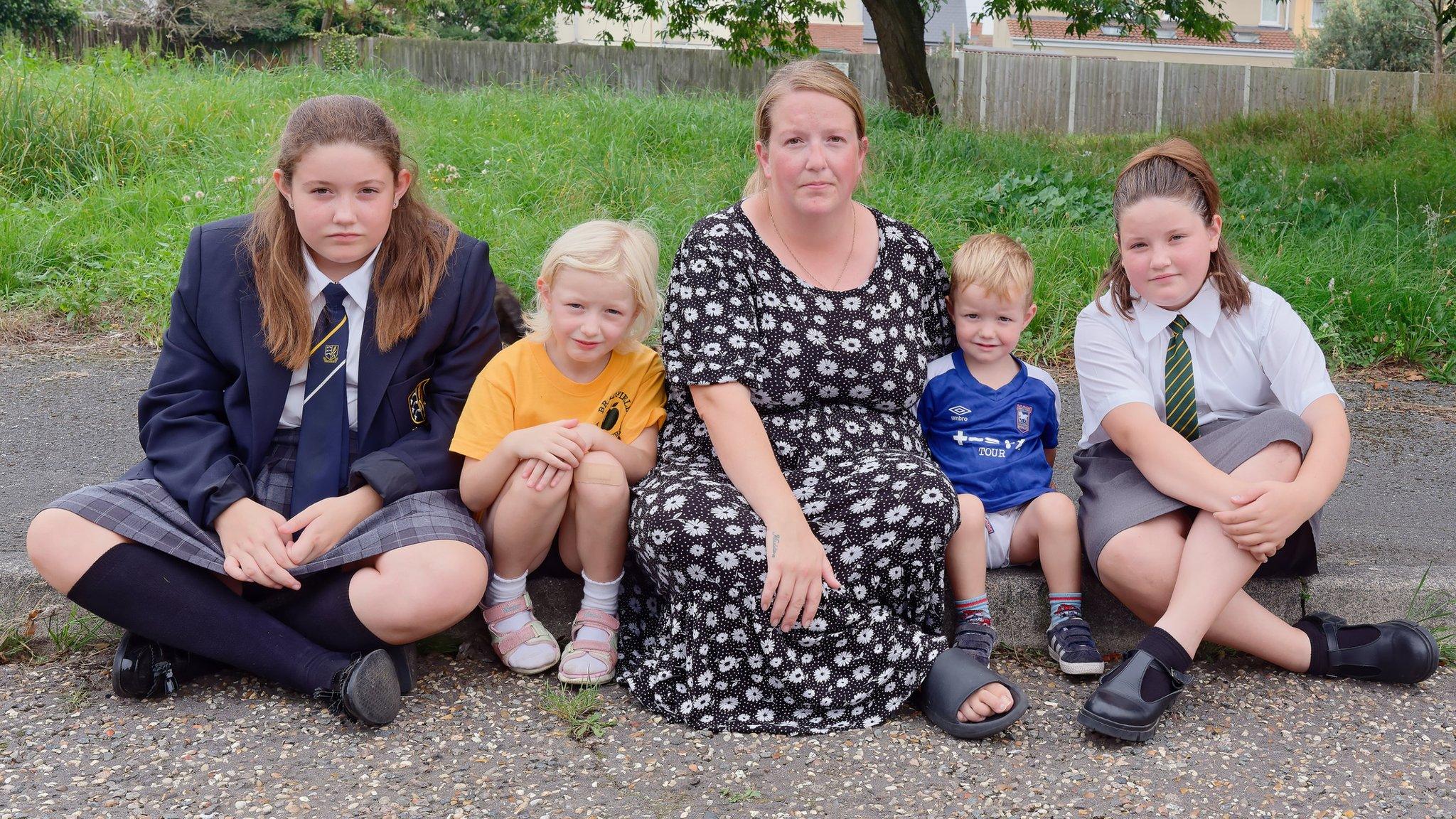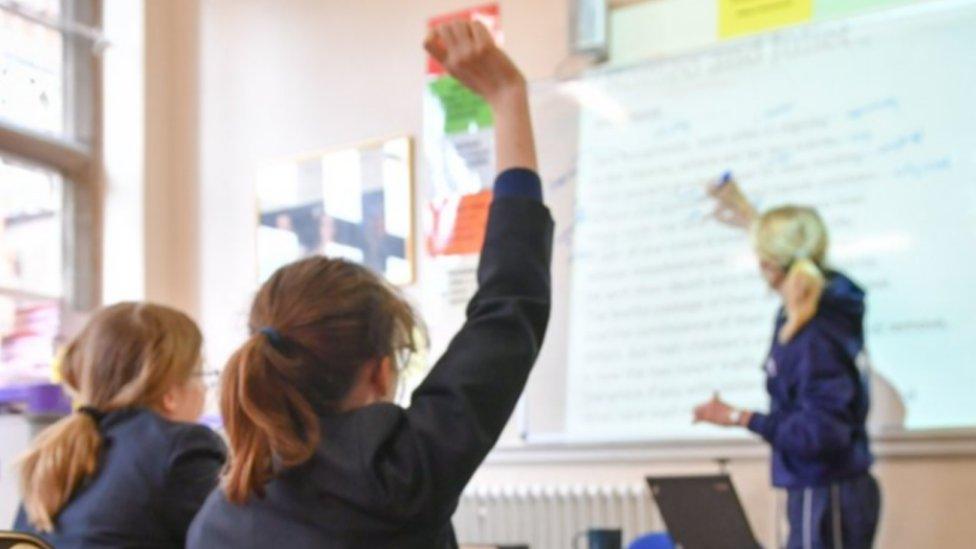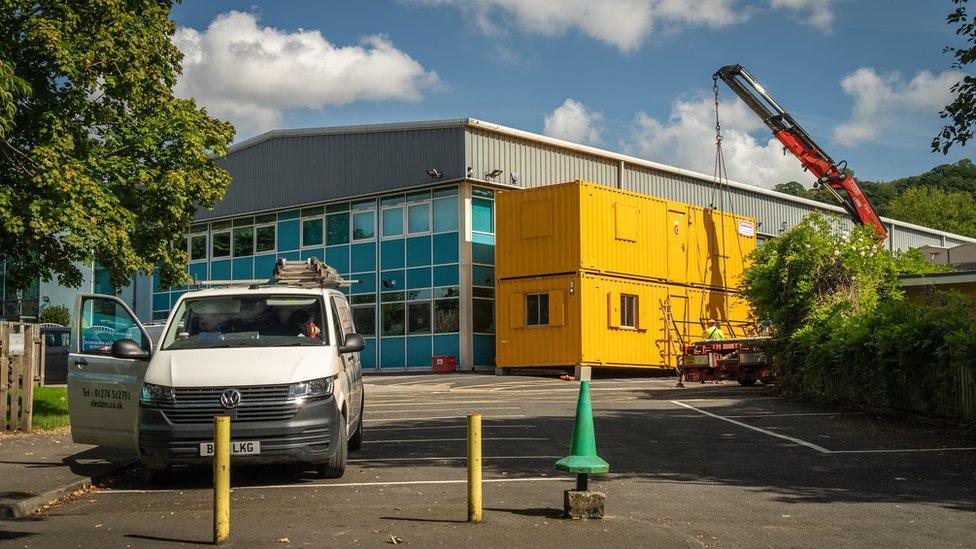More schools in the East of England added to government Raac list
- Published

Several schools in Essex have had to install temporary classrooms after being found to have Raac
An updated government list has revealed that more schools across the East have identified reinforced autoclaved aerated concrete (Raac).
The government has published an updated list of 214 schools, external and colleges with crumbling concrete, including eight in Essex.
Four schools in Hertfordshire, two in Suffolk and Buckinghamshire, and one in Peterborough are also on the list.
The government said 43 schools had been added since the last update.
The Department for Education (DfE) said 202 of the 214 schools were now offering full-time face-to-face education for its pupils while the other 12 were using a combination of remote and in-person learning.
Essex, which was worst hit by the Raac crisis, has five schools that are still using some remote teaching.
The latest update takes the number of Raac-affected schools in Essex to 70 and includes:
Cann Hall Primary School, Clacton
Elm Hall Primary School, Witham
Manningtree High School, Harwich
Priory Primary School, Bicknacre
Shoeburyness High School, Rochford
South View School, Witham
Spring Meadow Primary School and School House Nursery, Harwich
Thameside Primary School, Thurrock
Meanwhile, nine other schools in our region have been added to the updated list:
Bushey and Oxhey Infant School
Cheddington Combined School, Buckingham
Churchfield CofE Academy, Broxbourne
Sir William Borlase's Grammar School, Beaconsfield
Links Academy, St Albans
Newmarket Academy, West Suffolk
Peterborough College
Stowupland High School, Stowmarket
Watford Grammar School for Boys
A spokesman for Peterborough College said "a small amount of low risk Raac" had been identified in the main hall and the area would be closed to staff and students "whilst intrusive surveys were completed".He added: "All students remain in face-to-face education with no disruption to the delivery of education or risk of closure to the college."
In a written ministerial statement on Thursday, Education Secretary Gillian Keegan said 99.9% of responses to a questionnaire about suspected Raac had now been submitted to the DfE, with 17 still outstanding.
She added: "I want to reassure pupils, parents and staff that this government is doing whatever it takes to support our schools and colleges in responding to Raac and minimise disruption to education."

A brochure for the Metsec system shows how its system supported roofs constructed from Raac
What is Raac?
Raac is a lightweight material used mostly in flat roofing, but also in floors and walls, between the 1950s and 1990s.
It is a cheaper alternative to standard concrete and has a lifespan of about 30 years.
In June, the National Audit Office reported that years of insufficient funding had increased the risk of a building collapse.
Over the summer, a Raac panel that would have been classed as "non-critical" collapsed at a school in England - leading to the final decision to take action, and a scramble ahead of the start of term.
National Association of Head Teachers (NAHT) general secretary Paul Whiteman said the disruption for more pupils, parents and staff members was now "a real concern".
Members had reported the DfE's initial response had been "mostly good", he said, but many were still waiting for temporary classrooms to be put in place, with some expecting to wait "more than six weeks".
Note all settings with confirmed Raac at 16 October 2023 as published on the government website on 19 October.

Follow East of England news on Facebook, external, Instagram, external and X, external. Got a story? Email eastofenglandnews@bbc.co.uk, external or WhatsApp 0800 169 1830
Related topics
- Published13 February 2024

- Published18 October 2023

- Published19 September 2023

- Published10 September 2023

- Published1 September 2023

- Published1 September 2023
